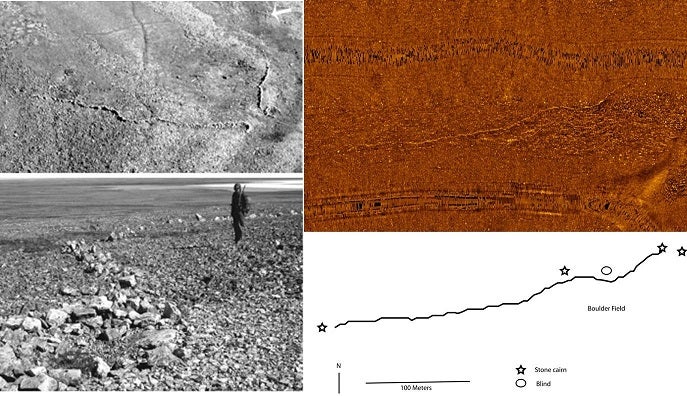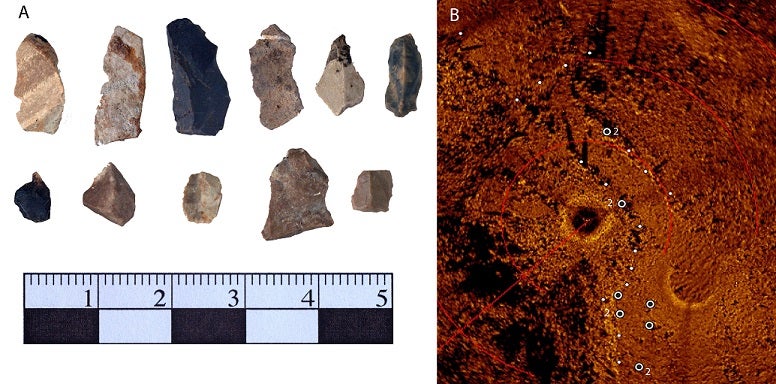Hunting Caribou Hunters Beneath Lake Huron
Nine thousand years ago, a dry land corridor called the Alpena-Amberly Ridge (AAR) connected northern Lower Michigan with Southern Ontario. This corridor provided a natural causeway from the semi-annual migration of caribou and an equally valuable terrain for Late Paleoindian and Early Archaic hunters seeking to exploit the herds. Using survey techniques including side-scan sonar, multibeam sonar, autonomous underwater vehicles (AUVs), and remote operated vehicles (ROVs) – an international team of researchers led by the University of Michigan is searching for traces of ancient hunters beneath Lake Huron.

The map shows the Alpena-Amberly Ridge during the Early Lake Stanley Phase, 9900-9500 RCYBP (Image courtesy of National Geographic Drain the Great Lakes).
Paleoenvironment
Taken together, grain morphology, the presence of distinct marsh biological assemblages, non-arboreal pollen, and ancient wood indicate a stable land surface 9,000 years ago with a rapid, but gentle inundation of the AAR.
These independent lines of evidence can be used to characterize the AAR paleoenvironment as a prairie parkland of grasses, tamarack and spruce, and a patchwork of boggy marshes, small shallow ponds and rivers, and larger lakes. The AAR was an ideal habitat for caribou and this confined natural causeway added an element of predictability to herd movement, providing an ideal setting for hunters targeting these animals.

Hunting Structures
Over 60 stone constructions have been found beneath Lake Huron and these are similar to caribou hunting structures known from the Arctic. Structures discovered to date range from simple one person hunting blinds to elaborate hunting complexes with drive lanes, standing and stacked stone cairns, and blinds. The orientation and placement of these structures on strategic points on the landscape reveal that most were used during the fall migration of caribou across the AAR.
Lithic Artifacts
Systematic sampling at one hunting site, called the Drop 45 drive lane (O’Shea et al. 2014), produced stone debitage from the repair and maintenance of tools. These flakes were found inside and near hunting blinds associated with the drive lane. On the image above the small white dots represent shovel tests underwater at the site, the larger circles are positive shovel tests, those that recovered stone artifacts.




